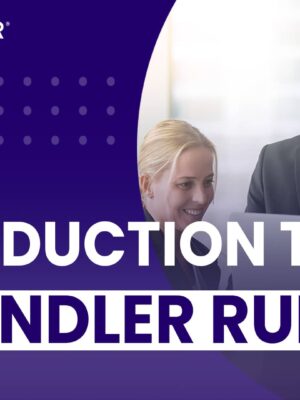Sandler Hot Take: Are Your Video Calls Making Prospects Zoom Out?

We all know what a game-changer videoconferencing has been for sales teams. It’s allowed us to connect in real time, voice-to-voice and face-to-face, with more decision makers, more influencers, and more organizations than ever before — regardless of distance barriers. For a lot of sales professionals and a lot of organizations, those barriers are now less important or even non-existent. That’s great. But there are potential downsides to every technological advance, and videoconferencing is no exception.
Videoconferencing has the potential to lead us into a serious, rapport-killing selling mistake that a whole lot of us are, unfortunately, already strongly predisposed to make.
I call this mistake “train selling”.
“Train selling” is what happens when we act like we’re a train barreling ahead on a line of track. Just like an express train, we’ve got one direction and one speed: straight ahead, fast. We’ve got our agenda, our list of things we aim to complete during this call, and nothing is going to stop us from moving rapidly through that agenda with the other person – in our order of preference.
When we act like an express train, we’re not engaging with the prospect as a human being. We’re not giving them any opportunity to communicate what’s going on in their world, business-related or otherwise. We just keep barreling right down the track. For instance:
“How are you doing this morning, Juanita?”
“Kind of crazy, actually. We just had a pretty tough call with one of our factory managers in the Czech Republic.”
“Yeah, it’s tough keeping track of a lot of different facilities, I know. Hey, we’ve only got, wow, already down to twenty-eight minutes here, so let me double-check this agenda with you so we can see if it still makes sense…”
Whoosh! Did you hear that train go by? What made that call with the factory manager tough? Who cares! On to the business at hand!
“Train selling” disconnects are all too common. They kill bonding and rapport. They kill opportunities. They can happen during in-person meetings, of course. But because the timeframes and attention-spans of conversations that take place via videoconference are typically much more compressed than those of in-person meetings, that express-train phenomenon is statistically most likely to show up these days when we’re jumping from Zoom call to Zoom call.
A far better model than the “train selling” approach is what I like to call the “sports car” approach.
This approach is built on the idea that people matter, that their present-tense emotions and circumstances are relevant, and that we can’t expect to have a relationship with them (business or any other kind) if we only focus on what’s happening in our world. So, the sports car, unlike the train, can change its course easily and quickly. It can go wherever it needs to go in service of the emotional reality of the present moment. Because that’s what matters. Even on a video call.
“How are you doing this morning, Juanita?”
“Kind of crazy, actually. We just had a pretty tough call with one of our factory managers in the Czech Republic.”
“What happened?”
“Nothing good. There was a computer system failure that compromised one of our safety systems. The whole factory is shut down. We just learned, during that call, that we had a fatality.”
“Oh, no.”
“Yeah. Not a good morning.”
“Wow. Well, listen. This is obviously not going to be a video call about what we had on the agenda yesterday. So, let me ask you: What do you need this video call to be about? How can I help?”
Bottom line: We may want to skip the express train… and hop into our sports car instead.
So, with that idea in mind, here are some classic Sandler gut-check questions for sales leaders:
- Which questioning model best supports the relationship with a buyer — the train or the sports car?
- Which is least likely to cause someone to “zoom out” of a Zoom meeting?
- Which best supports the relationship?
- Which of the two are you personally most likely to deploy now, out of force of habit?
- Which kind of meeting do sales leaders need to be role-playing ahead of time with the members of their selling team – the express train meeting or the sports car meeting?
- Which kind of meeting should sales leaders make a point of modeling during their one-on-one coaching sessions with salespeople?







